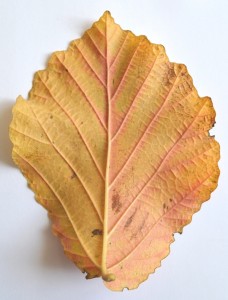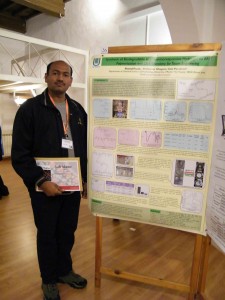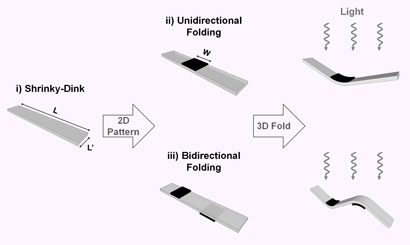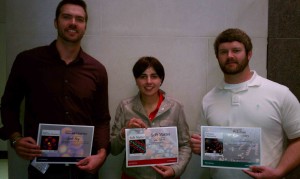 If someone asked you to draw the vein architecture of a leaf, your first thought might be to draw a tree-like structure; a central trunk with branches and twigs coming off it. While this picture may be correct for ancient and living fossils, it is not sufficient to describe the venation of most modern plants. For this loops are required. Eleni Katifori, Rockefeller University, is interested in why these loops have evolved and in understanding what purpose they serve.
If someone asked you to draw the vein architecture of a leaf, your first thought might be to draw a tree-like structure; a central trunk with branches and twigs coming off it. While this picture may be correct for ancient and living fossils, it is not sufficient to describe the venation of most modern plants. For this loops are required. Eleni Katifori, Rockefeller University, is interested in why these loops have evolved and in understanding what purpose they serve.
On first sight, loops seem inefficient due to the redundancy inherent in a loopy structure. The veins in a leaf act as a transport system, delivering water and nutrients to the leaf. Assuming that the demand for nutrients is constant across the whole leaf, then yes a loopy structure is inefficient. However, this is not the case. Fluctuations occur across the leaf, not all stomata are open or closed at the same time. This leads to variation in water evaporation rates and photosynthetic activity. Loops allow the flow to be efficiently re-routed through the leaf in response to these fluctuations.
As well as improving efficiency, Katifori has found that ‘loopyness’ increases the resilience of the leaf to damage. Take a look at a nearby tree, almost every leaf on it will be damaged in some way or other. For a simple tree like network damage will halt flow. There is no way for veins on the other side of the injury to receive any nutrients or water. For a loopy network however, this is not the case. The nutrients can flow around the injury closing the loops and will eventually reach all parts of the leaf. Videos showing the two different cases can be found here.
Similar loopy architectures are seen in the veins of some insect wings, animal tissues such as the retina and the road networks of cities.
Katifori E., Szollosi G. J. and Magnasco M. O., Damage and fluctuations induce loops in optimal transport networks, Phys. Rev. Lett., 2010, 104, 048704.
Recent paper on leaves in Soft Matter:
Xiao, H., Chen, X., Modelling and simulation of curled dry leaves, Soft Matter, 2011, 7, 10794-10802.
Comments Off on Loopy veins
 Congratulations to Sharad Pasale for winning a Soft Matter poster prize at the recent 3rd International Congress on Biohydrogels.
Congratulations to Sharad Pasale for winning a Soft Matter poster prize at the recent 3rd International Congress on Biohydrogels.![]()
![]()




















